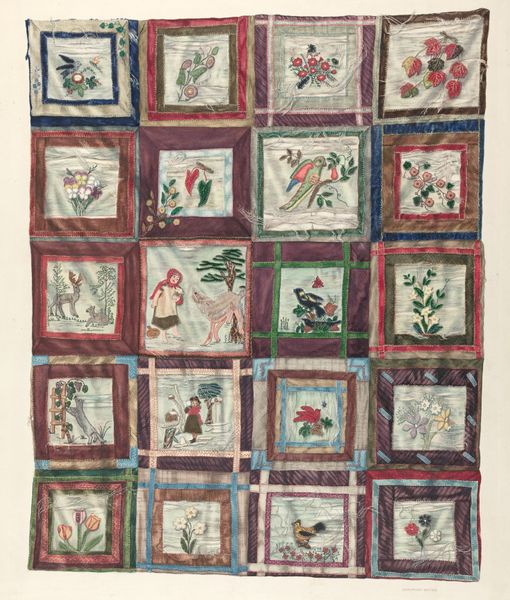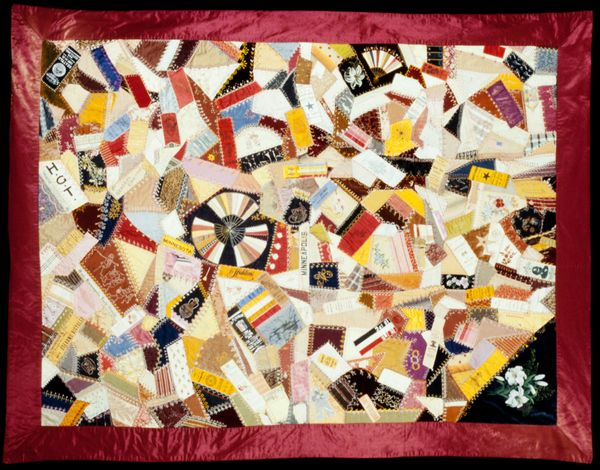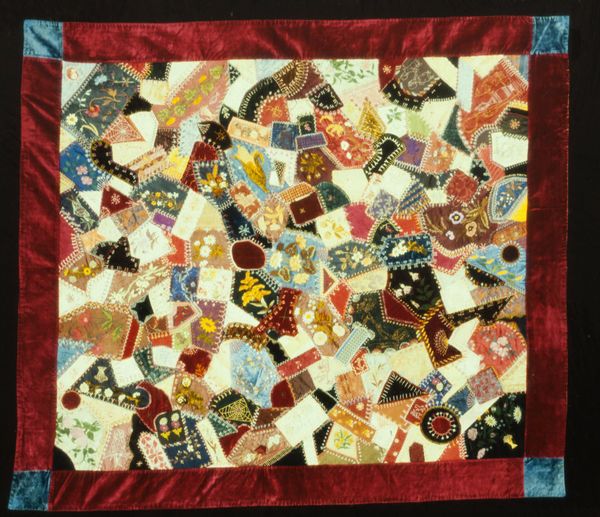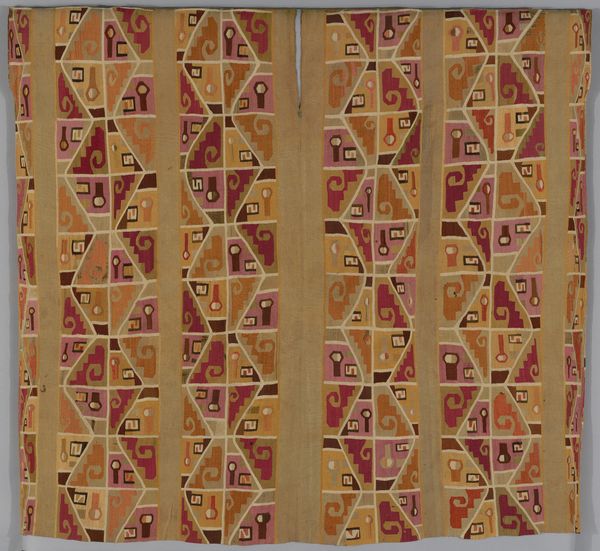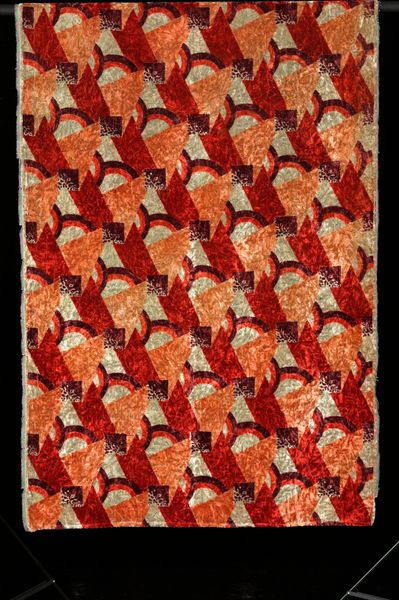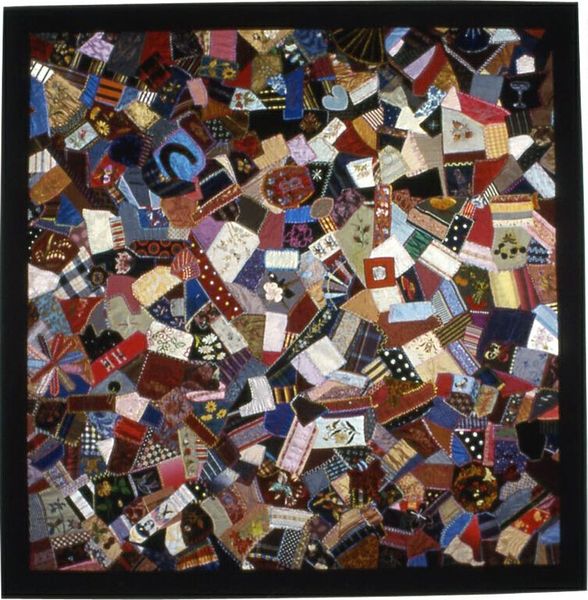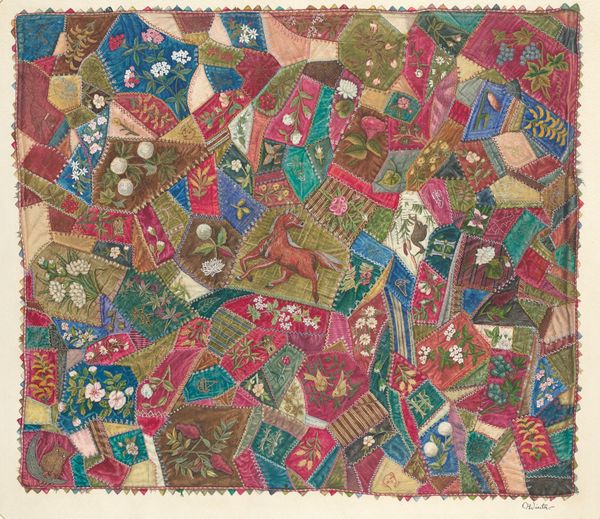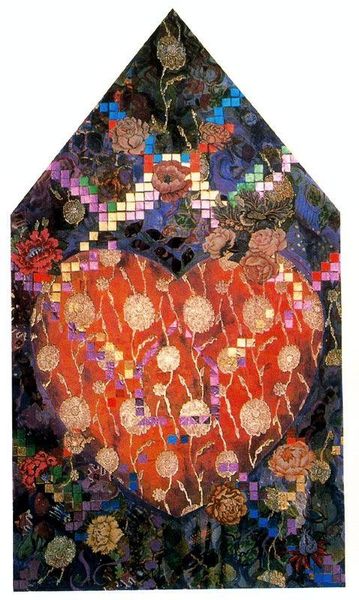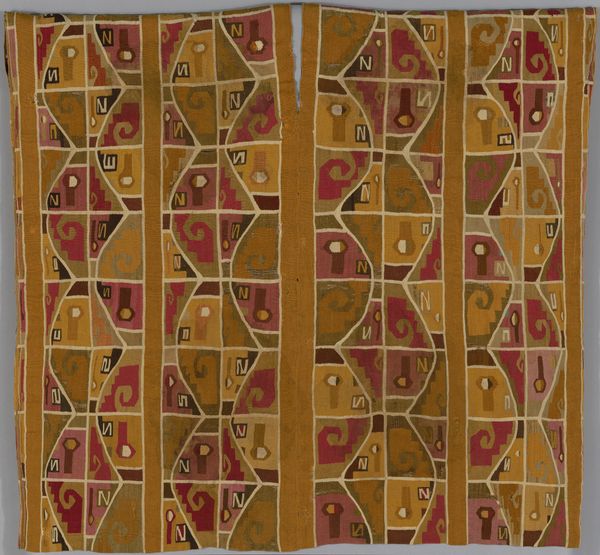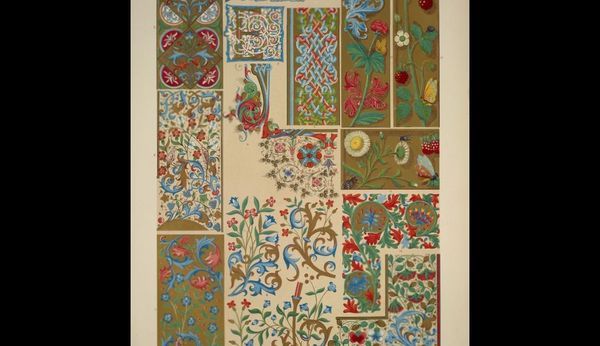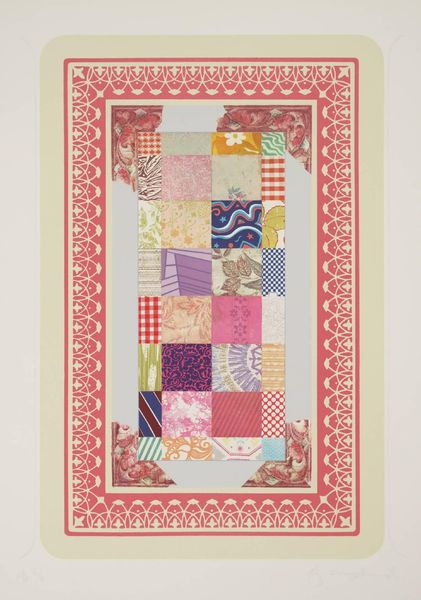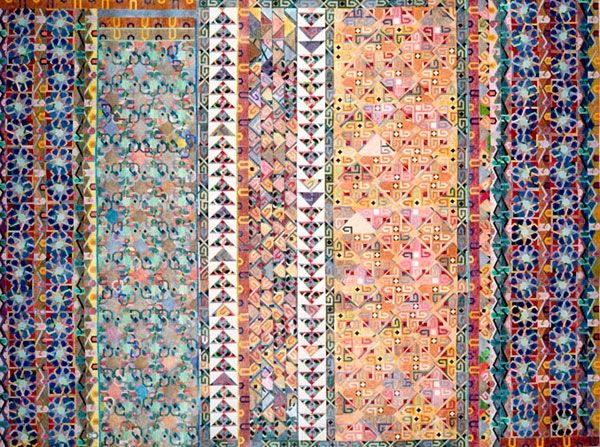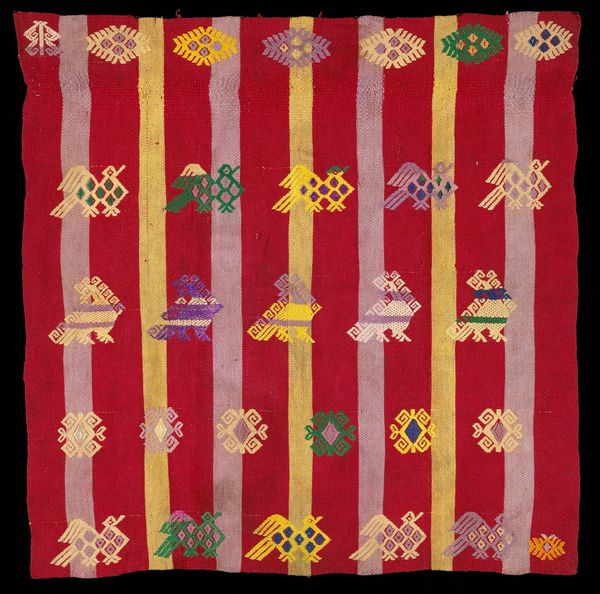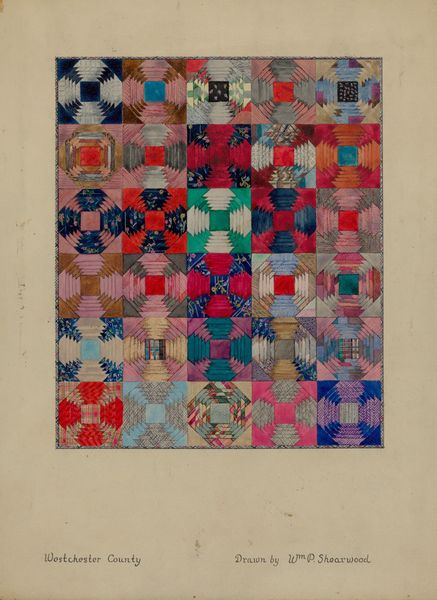
silk, textile
#
pattern heavy
#
natural stone pattern
#
naturalistic pattern
#
silk
#
loose pattern
#
textile
#
geometric pattern
#
abstract pattern
#
organic pattern
#
flower pattern
#
united-states
#
pattern repetition
#
layered pattern
Dimensions: 65 3/4 x 77 in. (167.01 x 195.58 cm)
Copyright: No Copyright - United States
Editor: So, this is Florence Barton Loring's *Crazy Quilt* from 1905, made with silk. It's a riot of colors and textures! It feels both meticulously crafted and delightfully chaotic. What catches your eye in this piece? Curator: I'm immediately drawn to the intentionality behind what might seem random. "Crazy quilts" like this were a fascinating trend; look closely, and you’ll find embedded personal and cultural symbols stitched within the fragments. Do you see anything that resembles a flower? Perhaps an animal or a geometric shape? Editor: I see floral patterns, definitely. And some shapes remind me of fans. Are those significant? Curator: Absolutely! The fan, often imported from the Orient, carried connotations of gentility and leisure. The presence of floral imagery might allude to Victorian notions of womanhood and domesticity. The act of quilting itself can be seen as a form of storytelling, using scraps to record memories and construct narratives through shared visual language. Notice the varying sizes and shapes within each square—how does that irregular composition contribute to your interpretation? Editor: It makes me think about individuality. Even though they are within these structured blocks, each section feels really personal. It is an art born of necessity, where even discarded pieces hold value. Curator: Precisely. And don't forget the context of its creation: at the turn of the century, the world was changing rapidly. Textiles became a powerful means to record personal identity and lineage. The "crazy quilt," born of fragments, becomes an emblem of the modern experience. Is there anything that feels ‘modern’ about this, for you? Editor: I hadn’t considered that, but I can see how the collage-like construction could feel quite avant-garde for its time. This piece reveals so much about personal identity and cultural memory. Curator: Indeed! And, considering we're still piecing together fragments of history and meaning even now, this crazy quilt really resonates!
Comments
minneapolisinstituteofart almost 2 years ago
⋮
In the late 19th century a new type of quilt was introduced to an audience of eager quilters. Constructed from hundreds of small bits of cloth with no set design, the Crazy Quilt is aptly named. The random shapes and sizes of the fabric are much like pieces of a puzzle that the quilter painstakingly assembles and stitches together to form blocks. The Crazy Quilt was very fashionable during the Victorian era, when scraps of silks and velvets, many embroidered with floral or sentimental imagery, were stitched into quilts, each piece outlined with intricate embroidery stitches. Florence Barton Loring was a prominent citizen of Minneapolis and the wife of Charles M. Loring, the "Father of the Park System" in Minneapolis. This quilt, believed to have been completed by 1905, is an embroidered biography of its maker. Each square references some aspect of Mrs. Loring's life, from her love of music, trees, birds and animals to tributes to her friends and family (see chart).
Join the conversation
Join millions of artists and users on Artera today and experience the ultimate creative platform.
